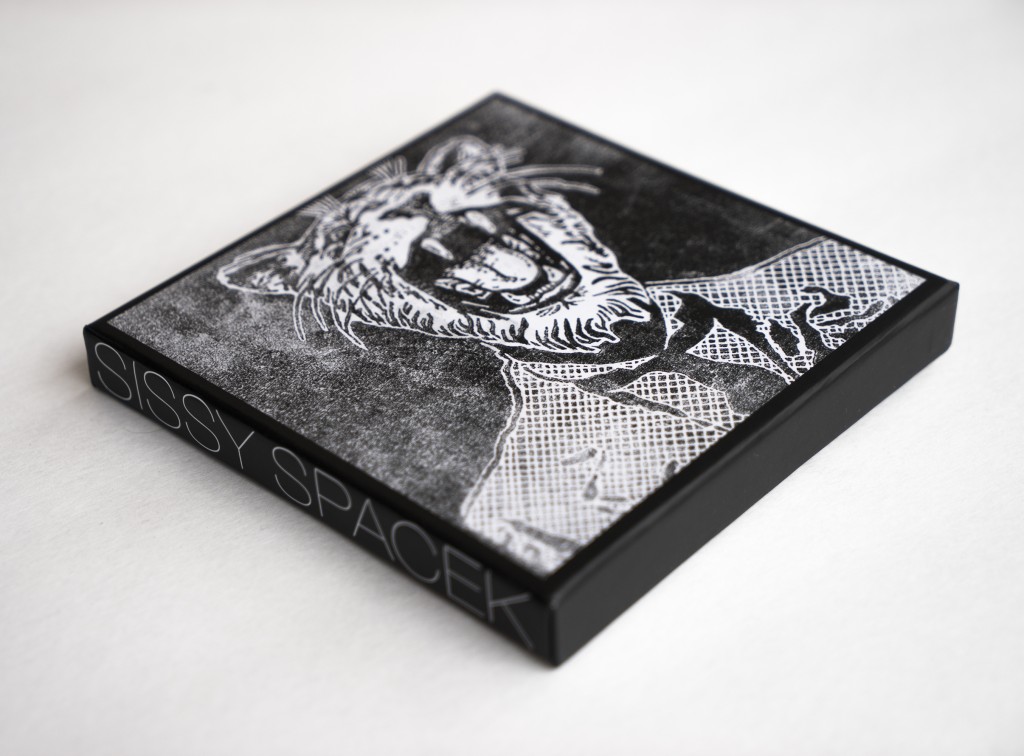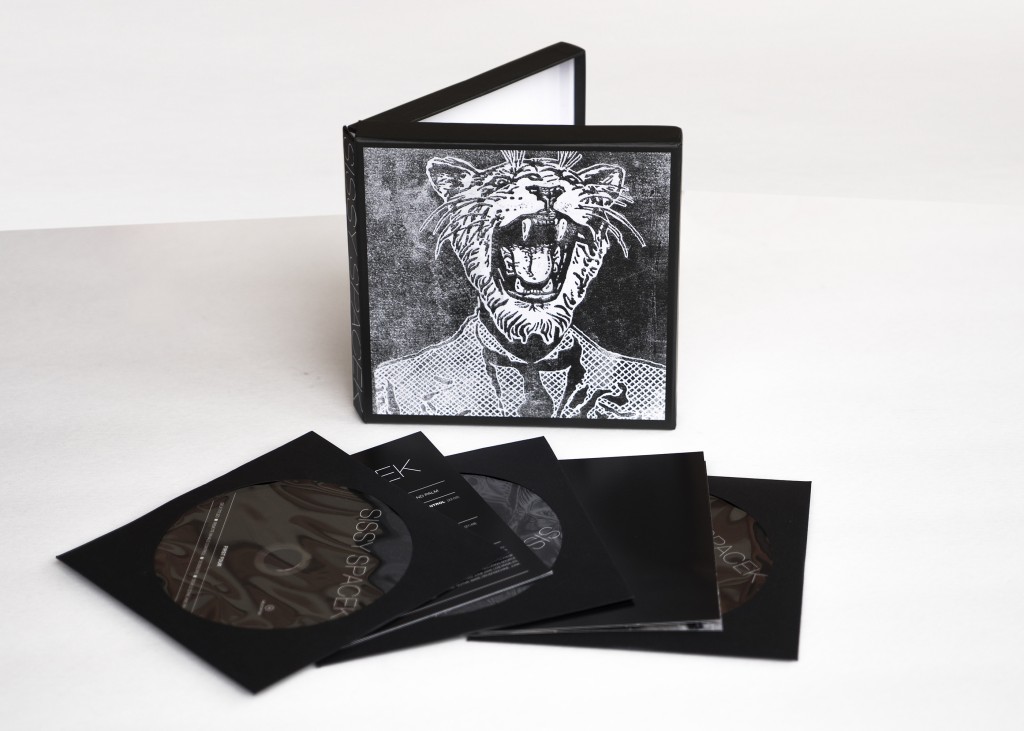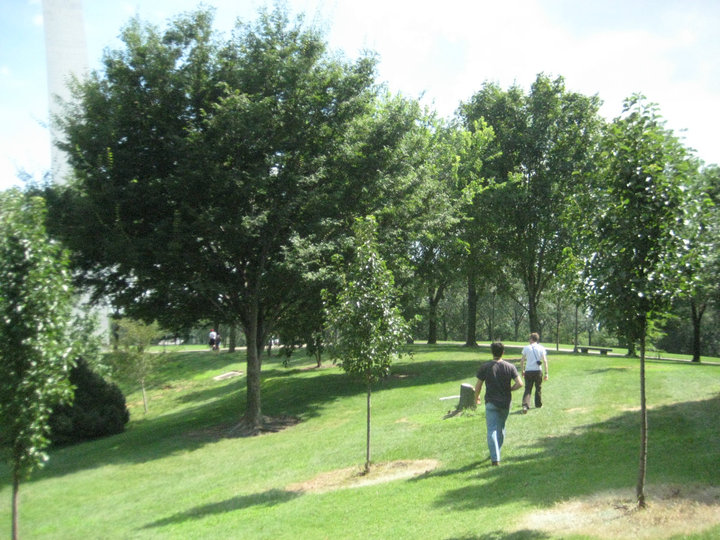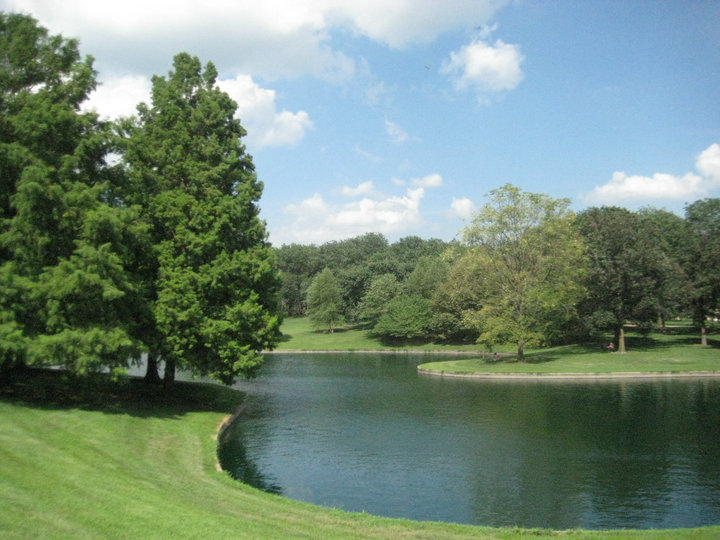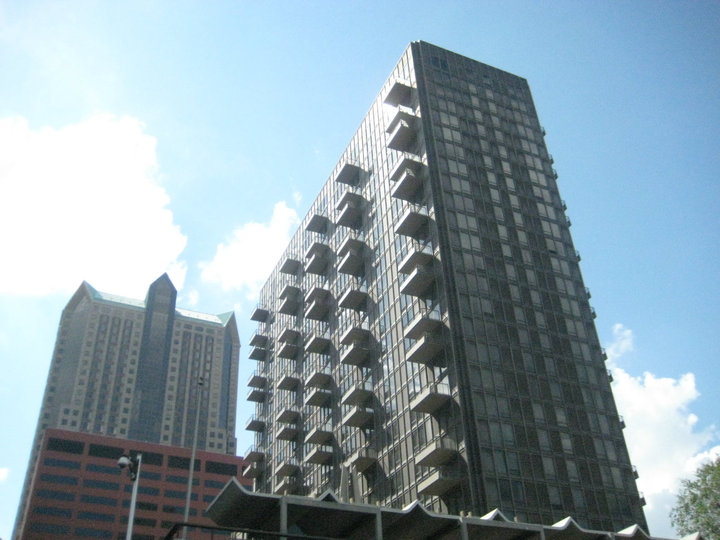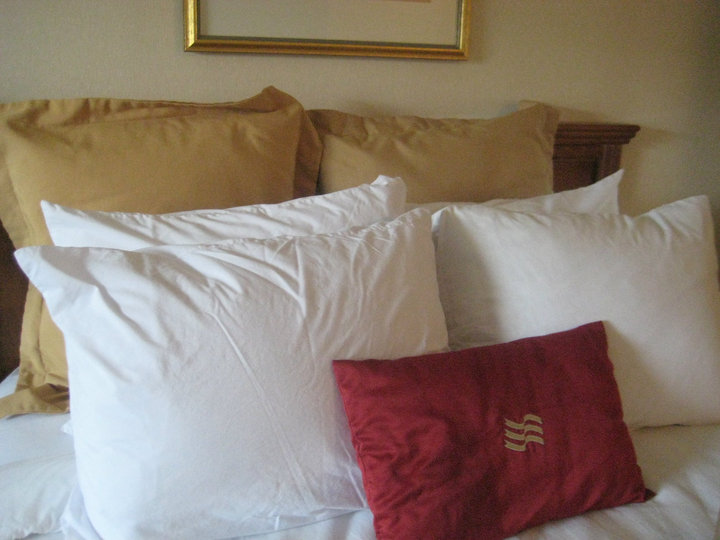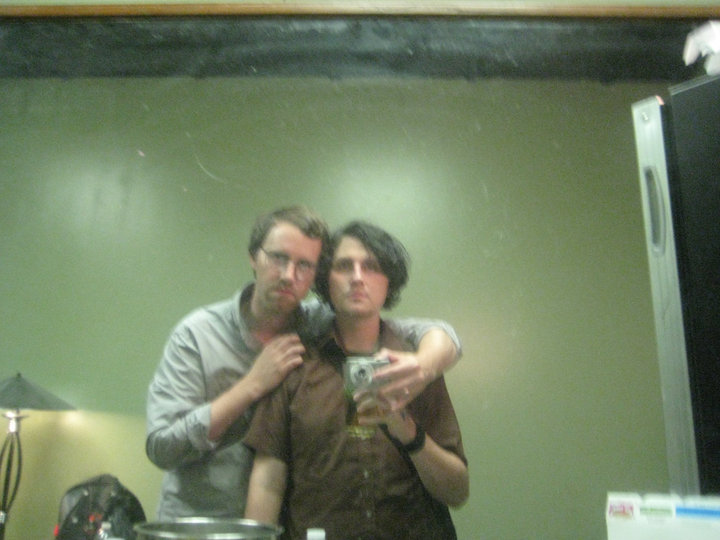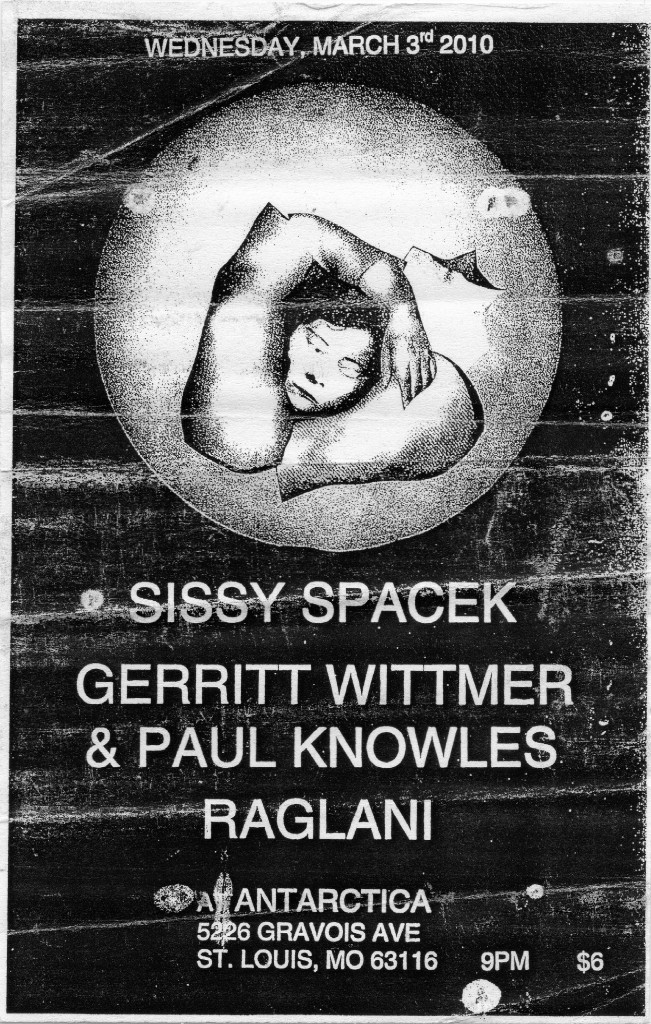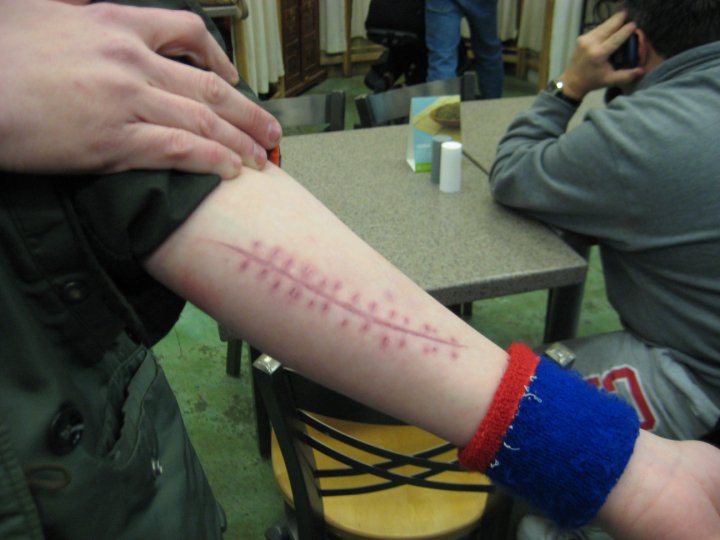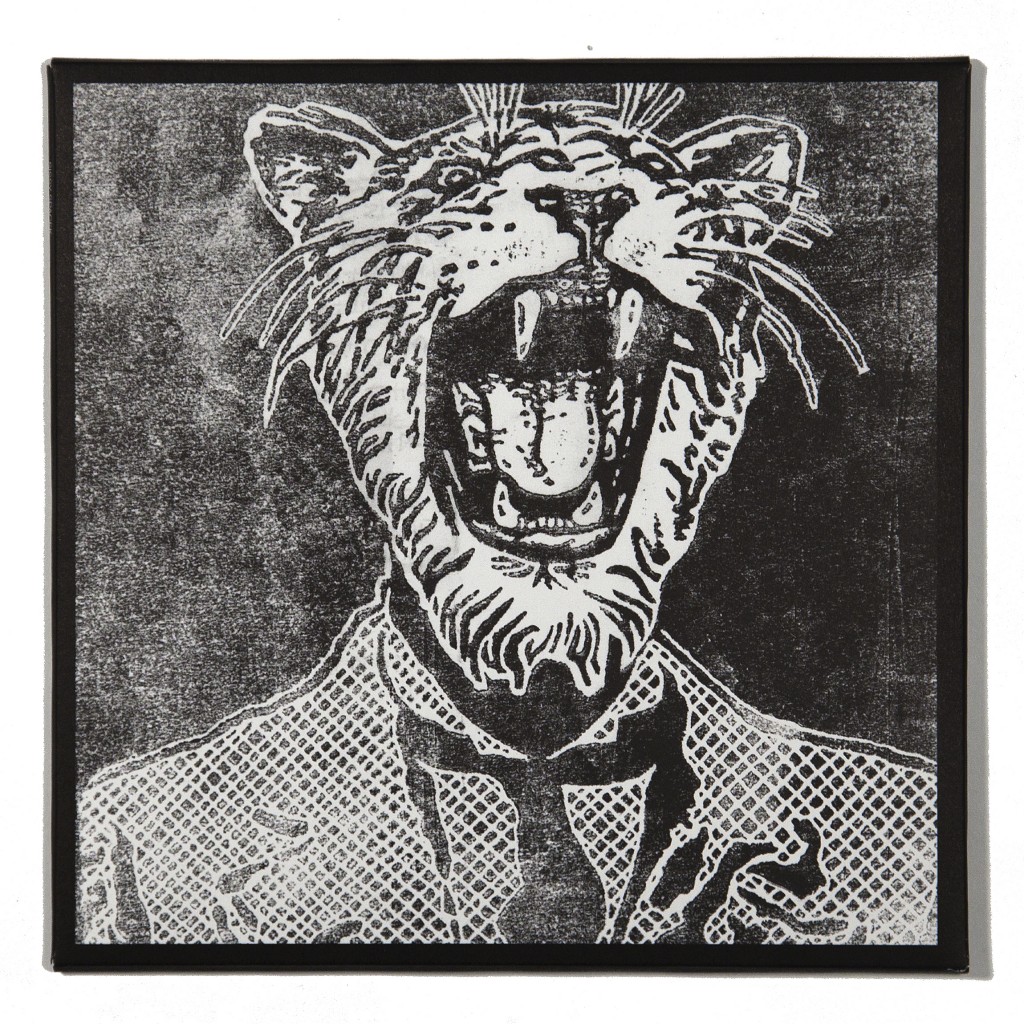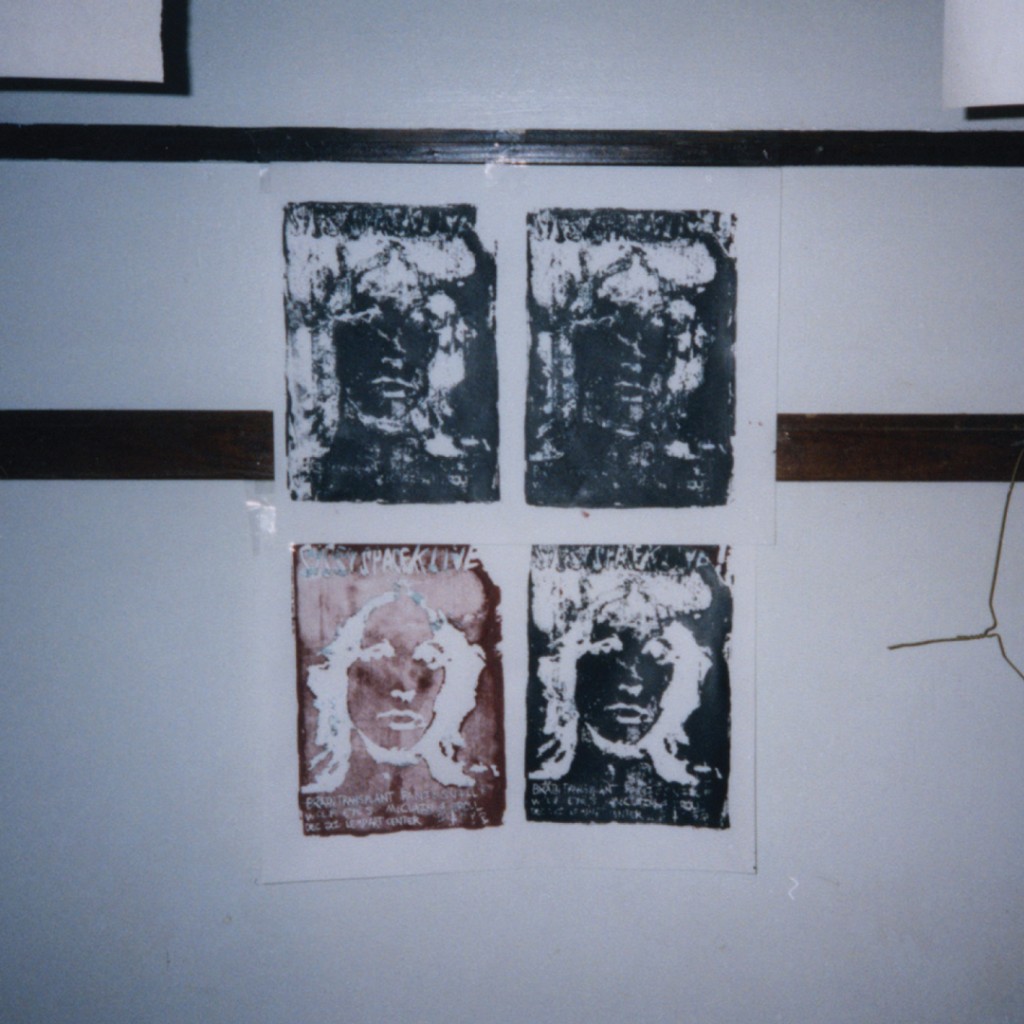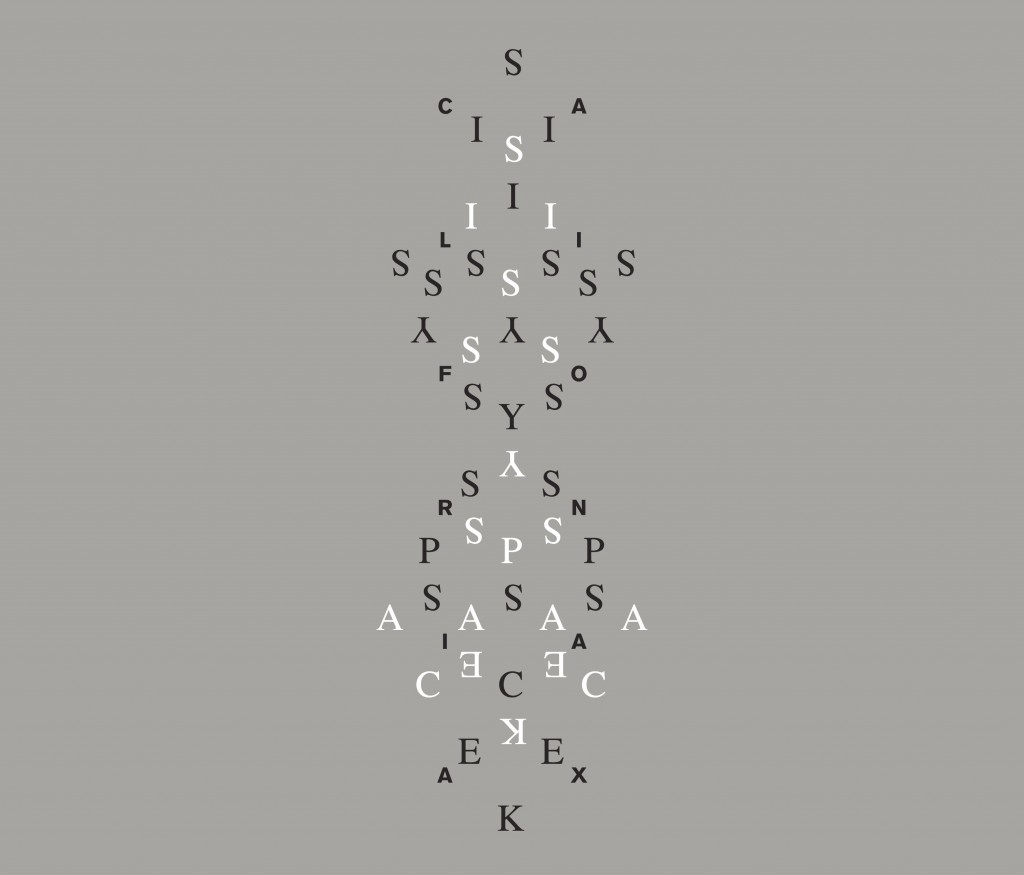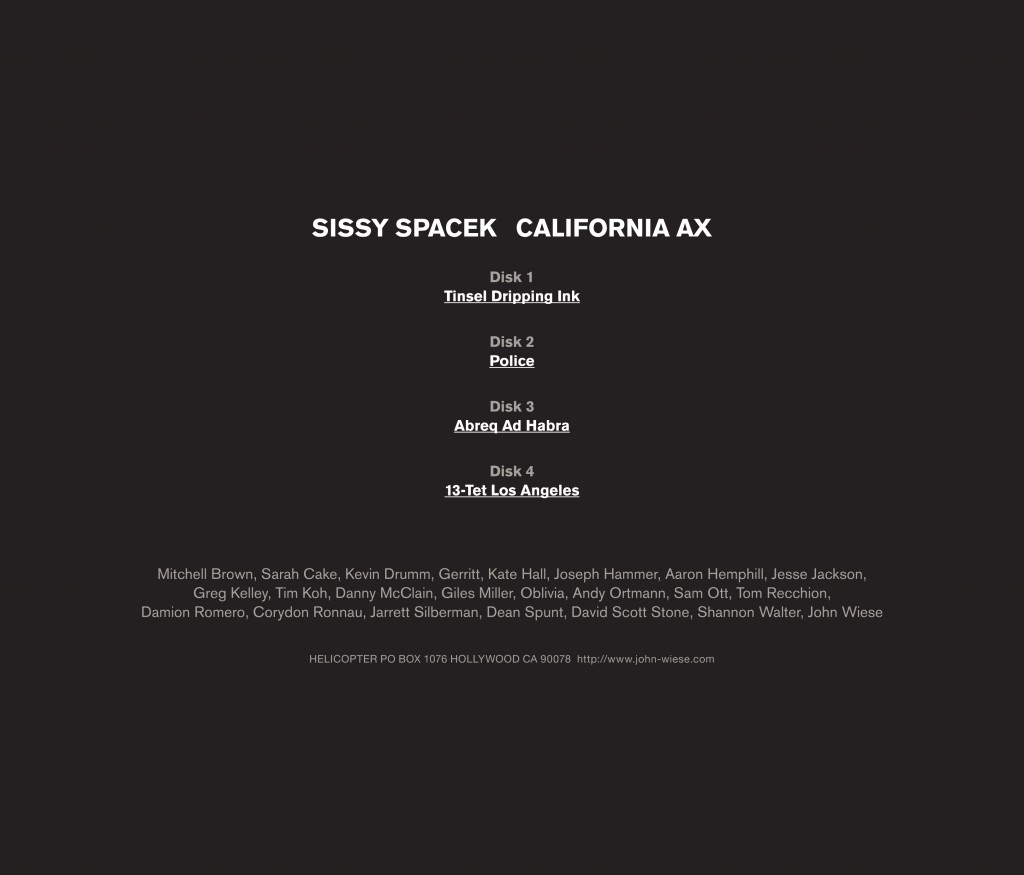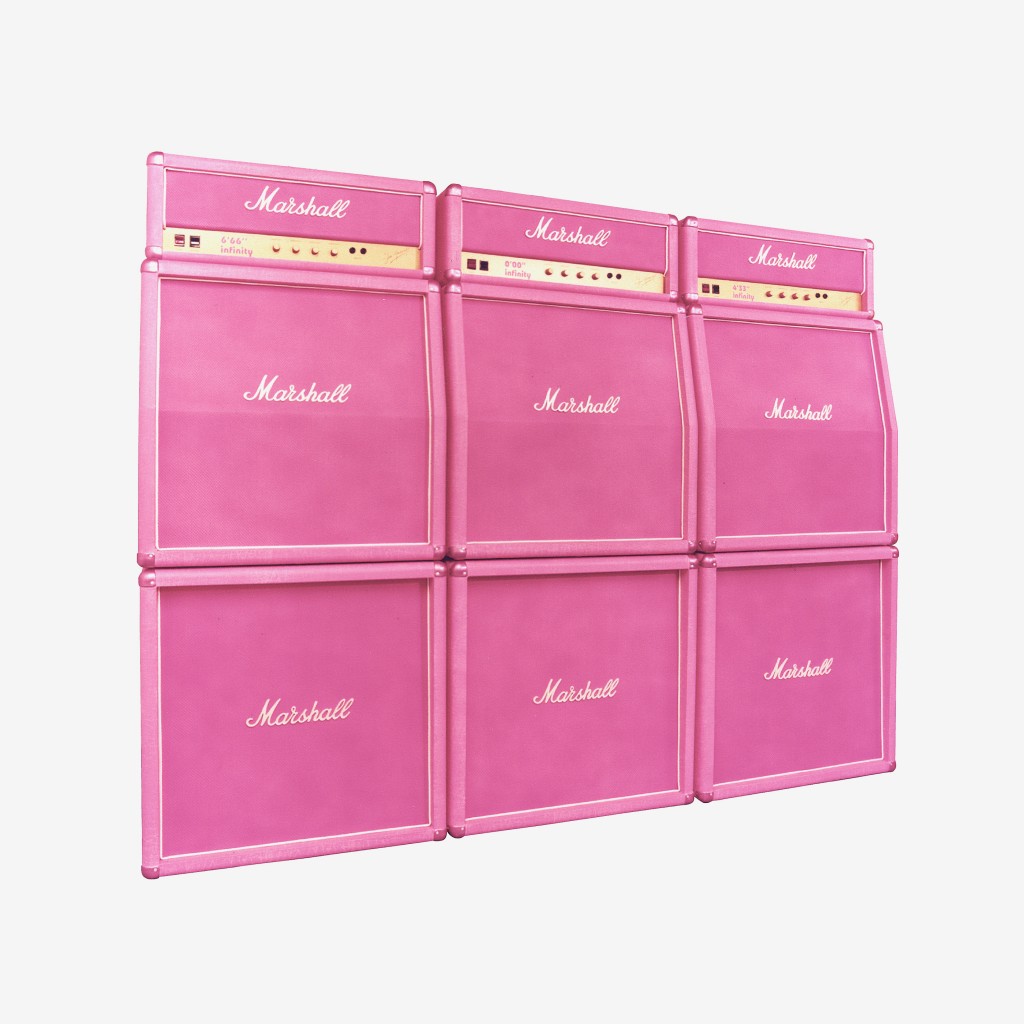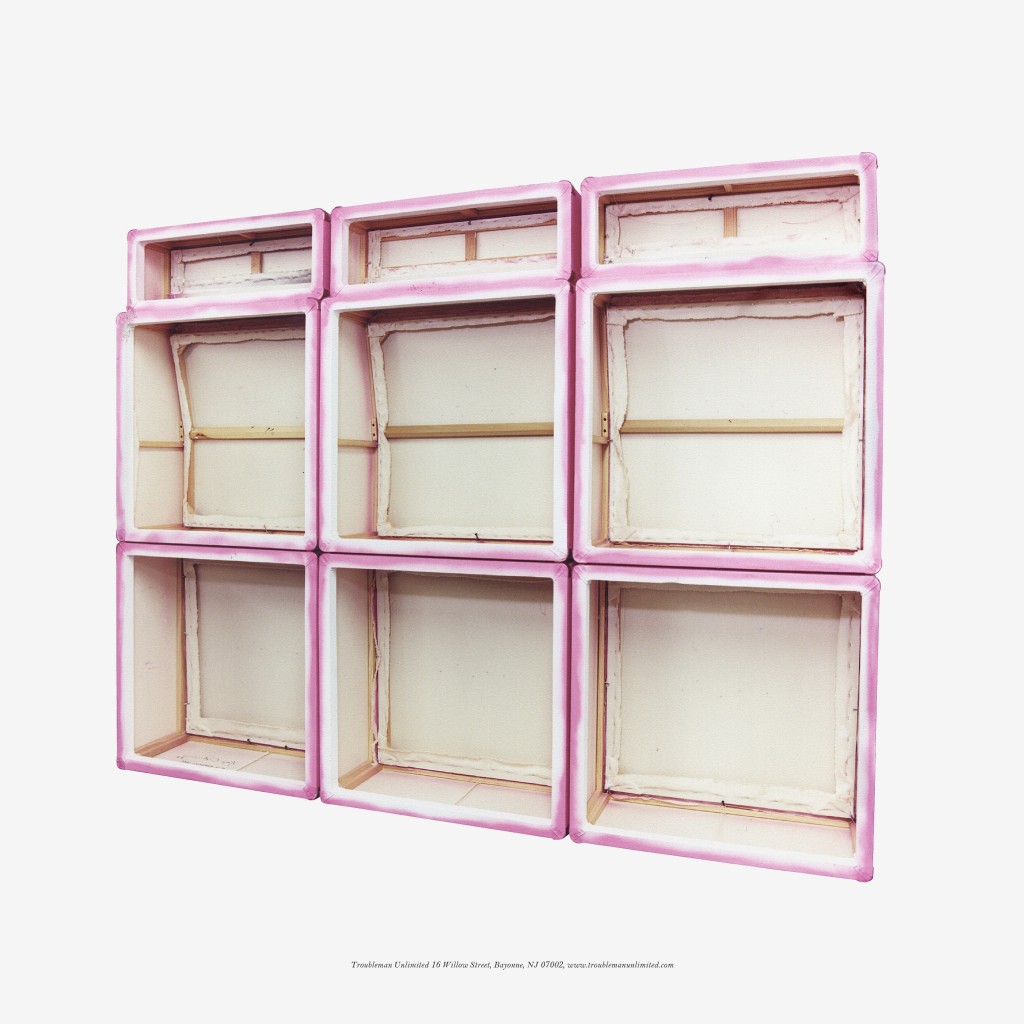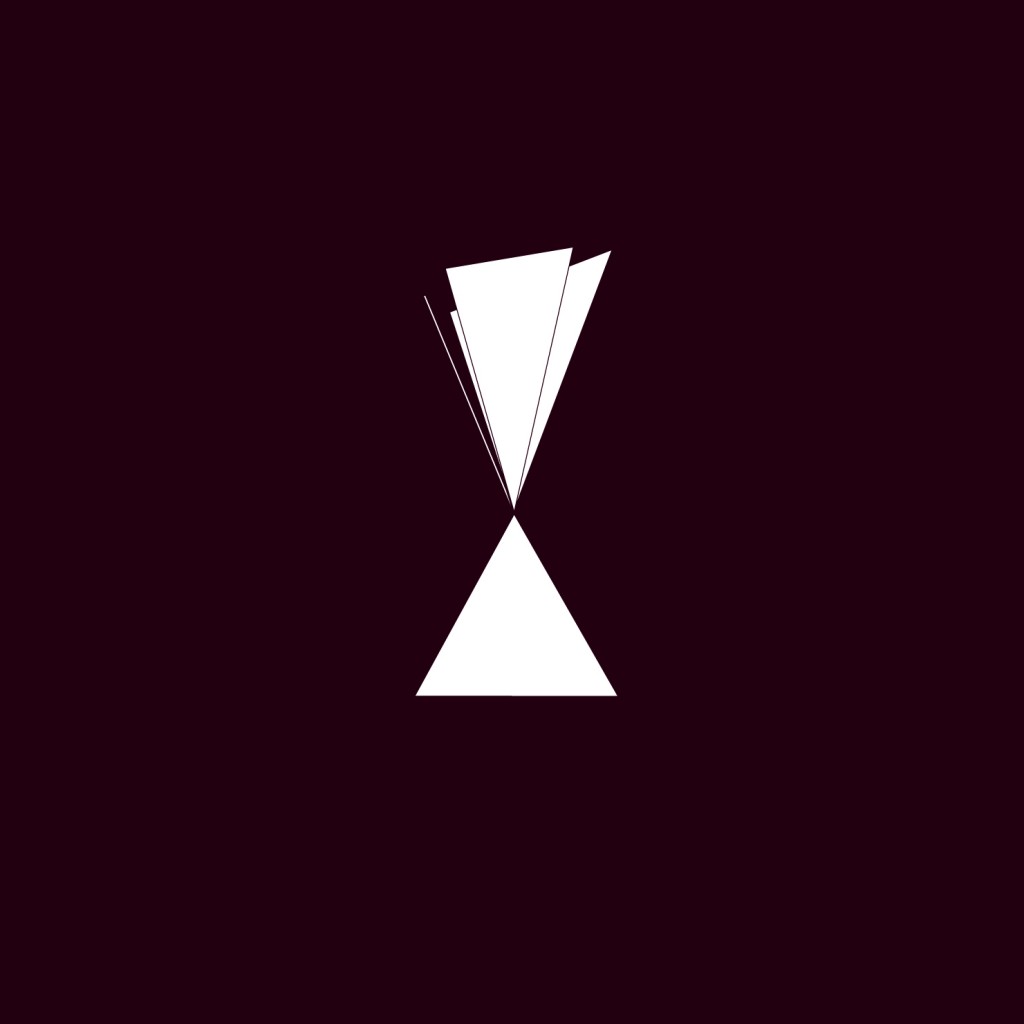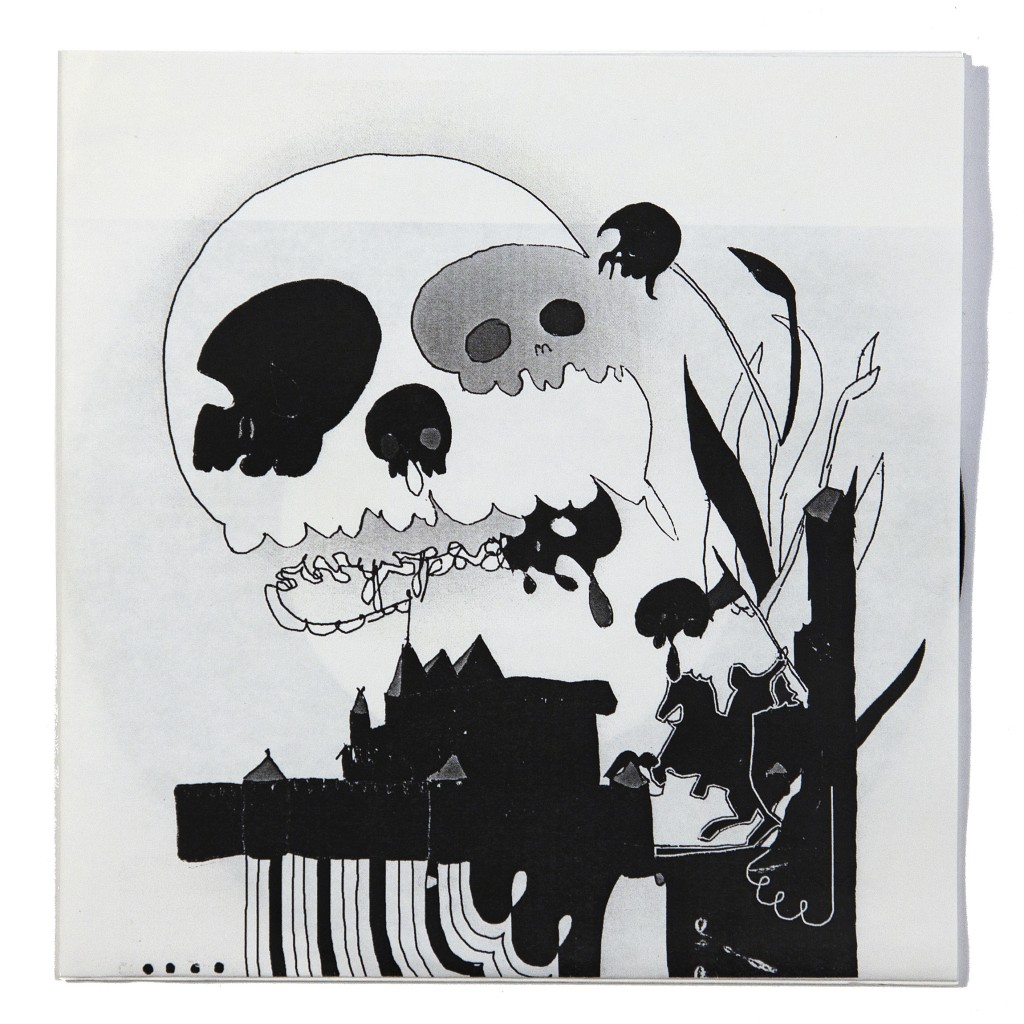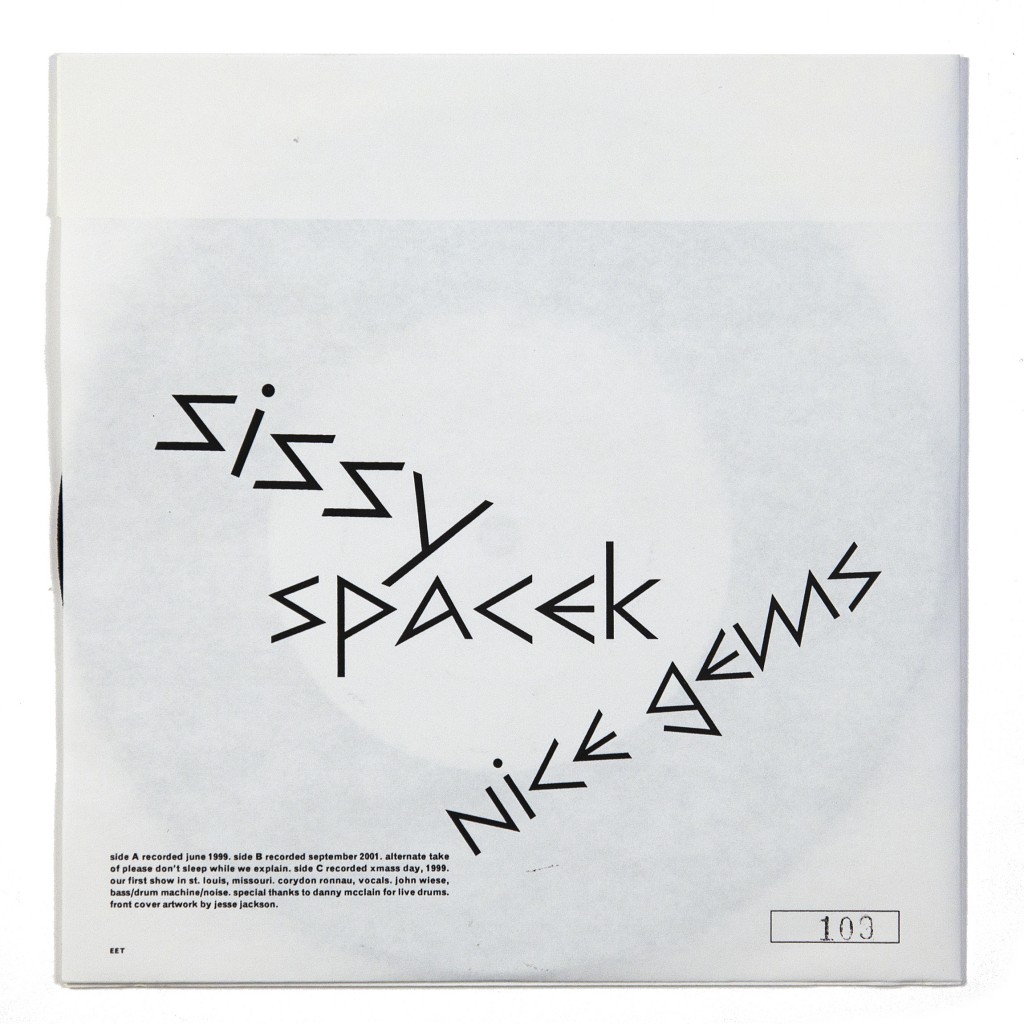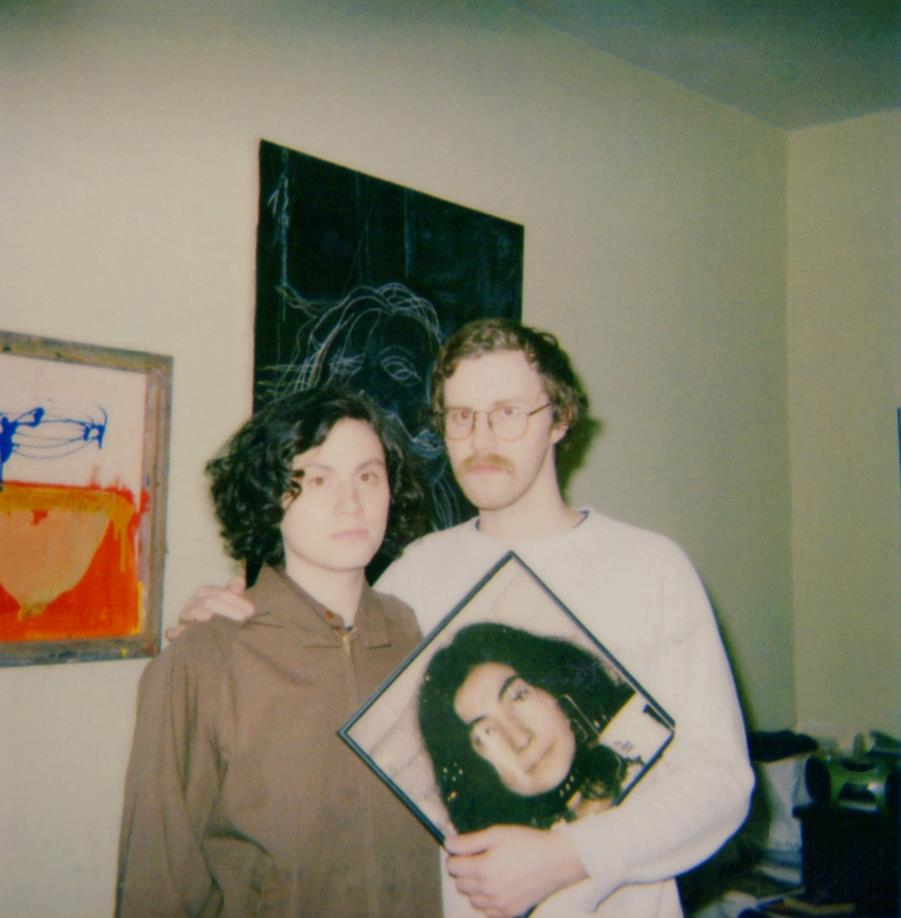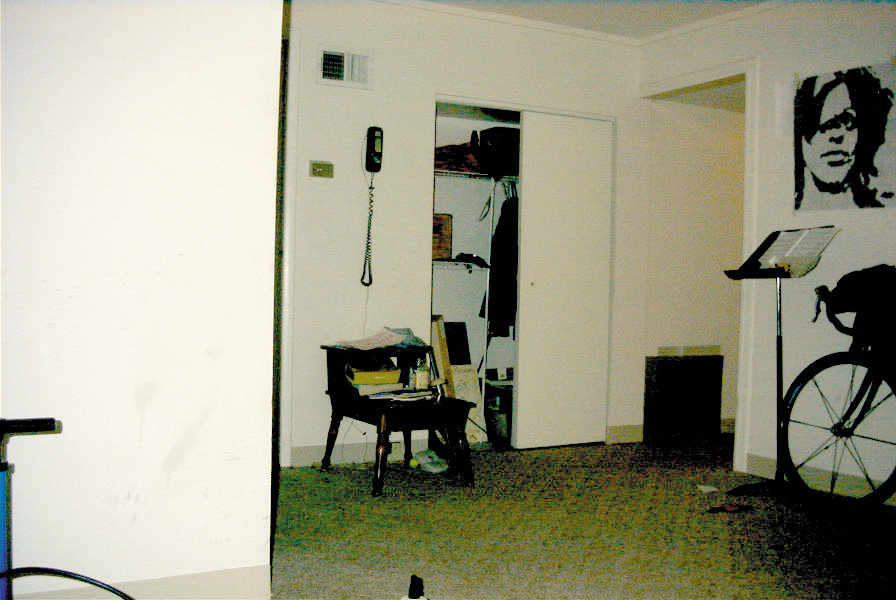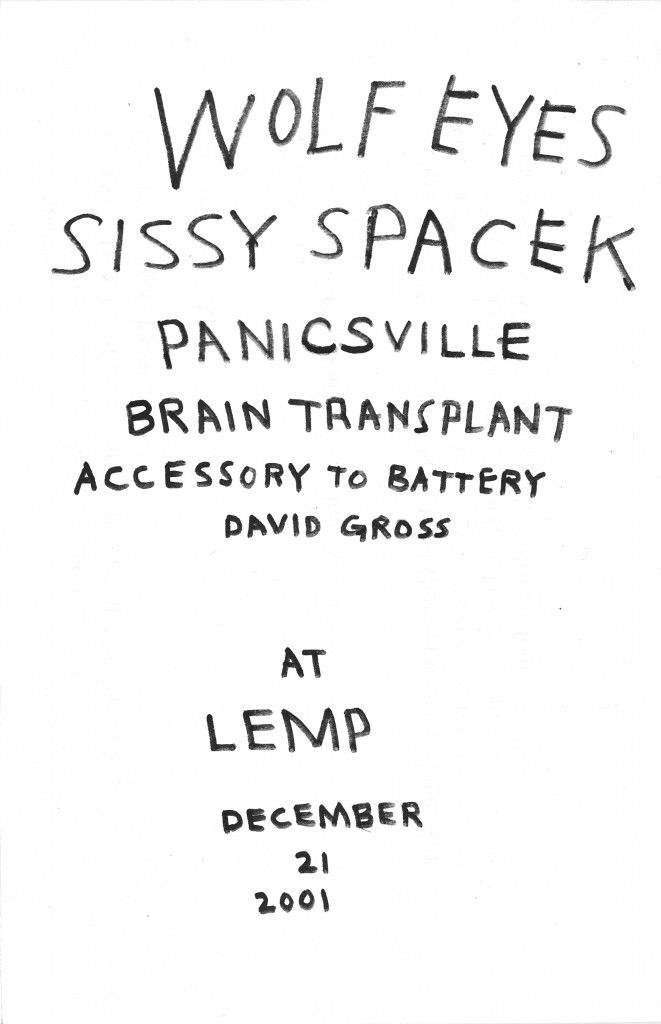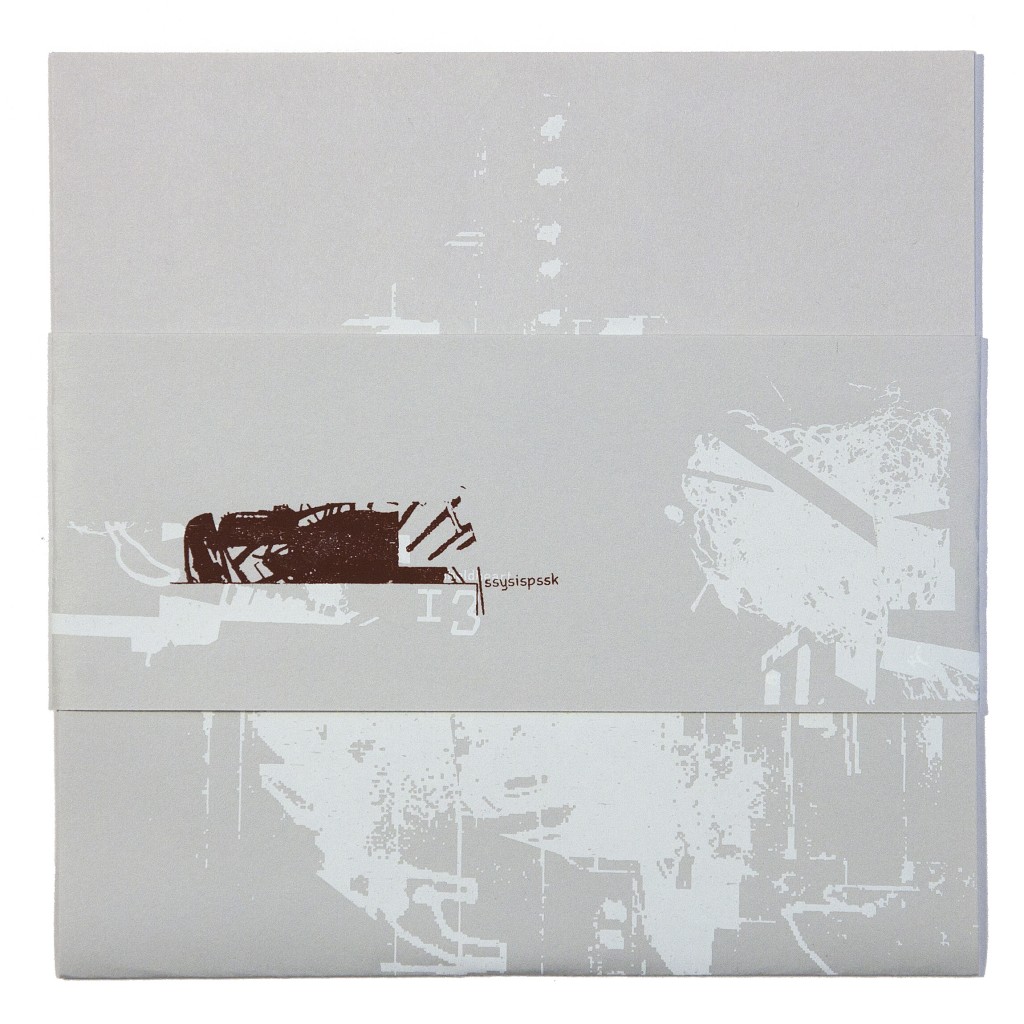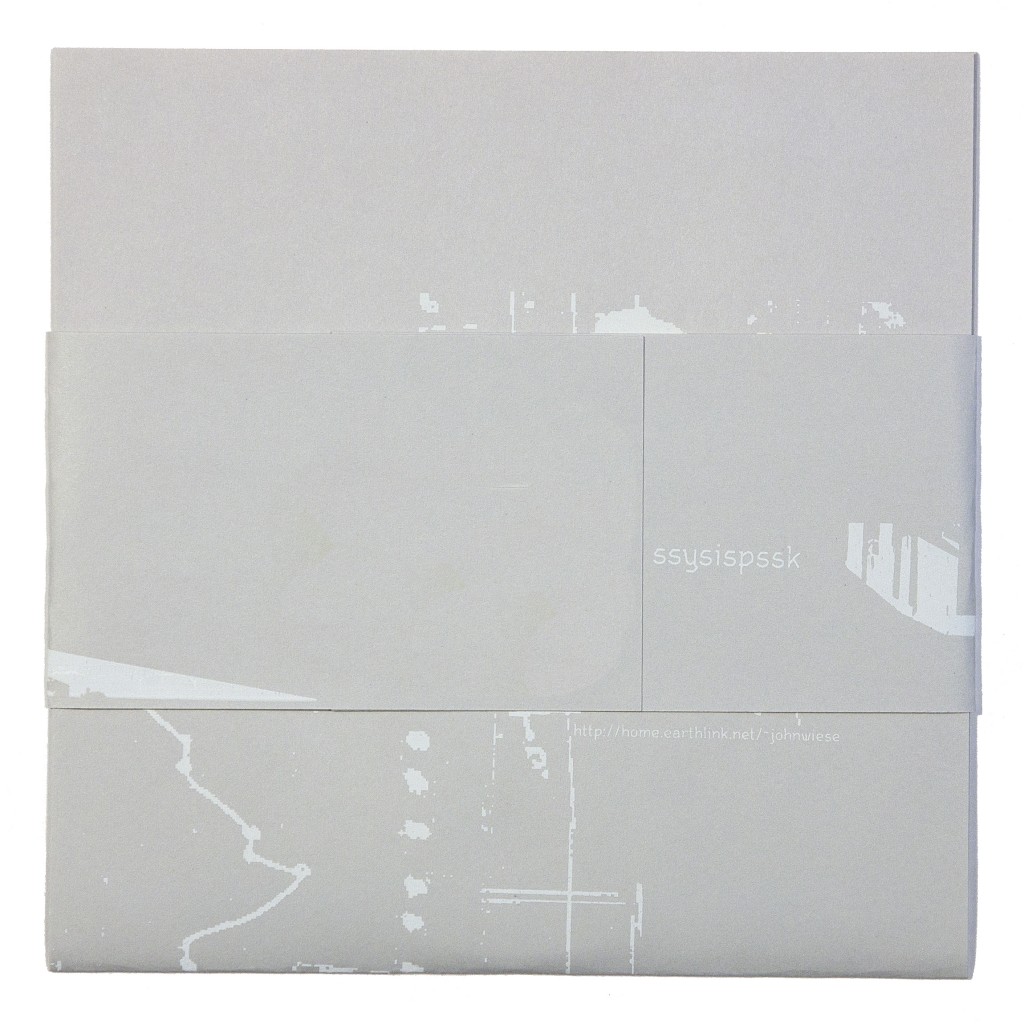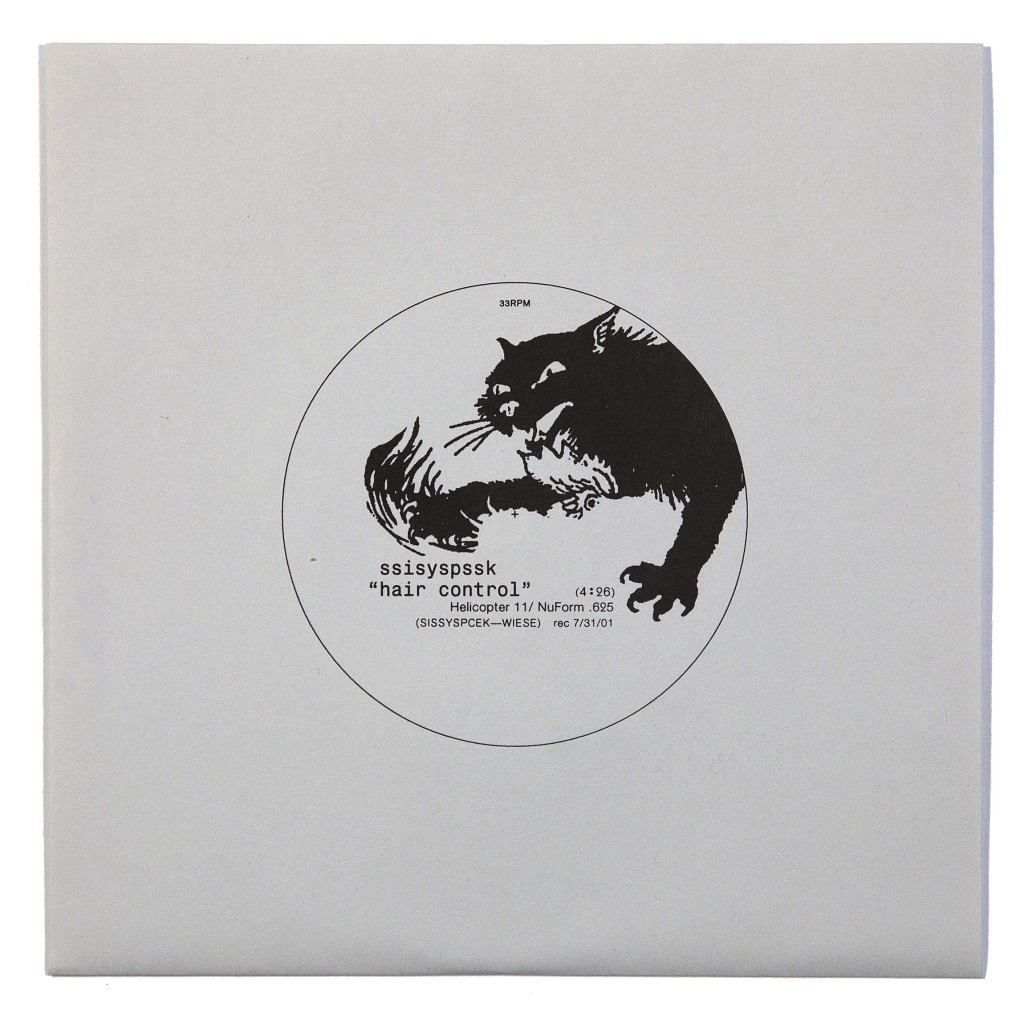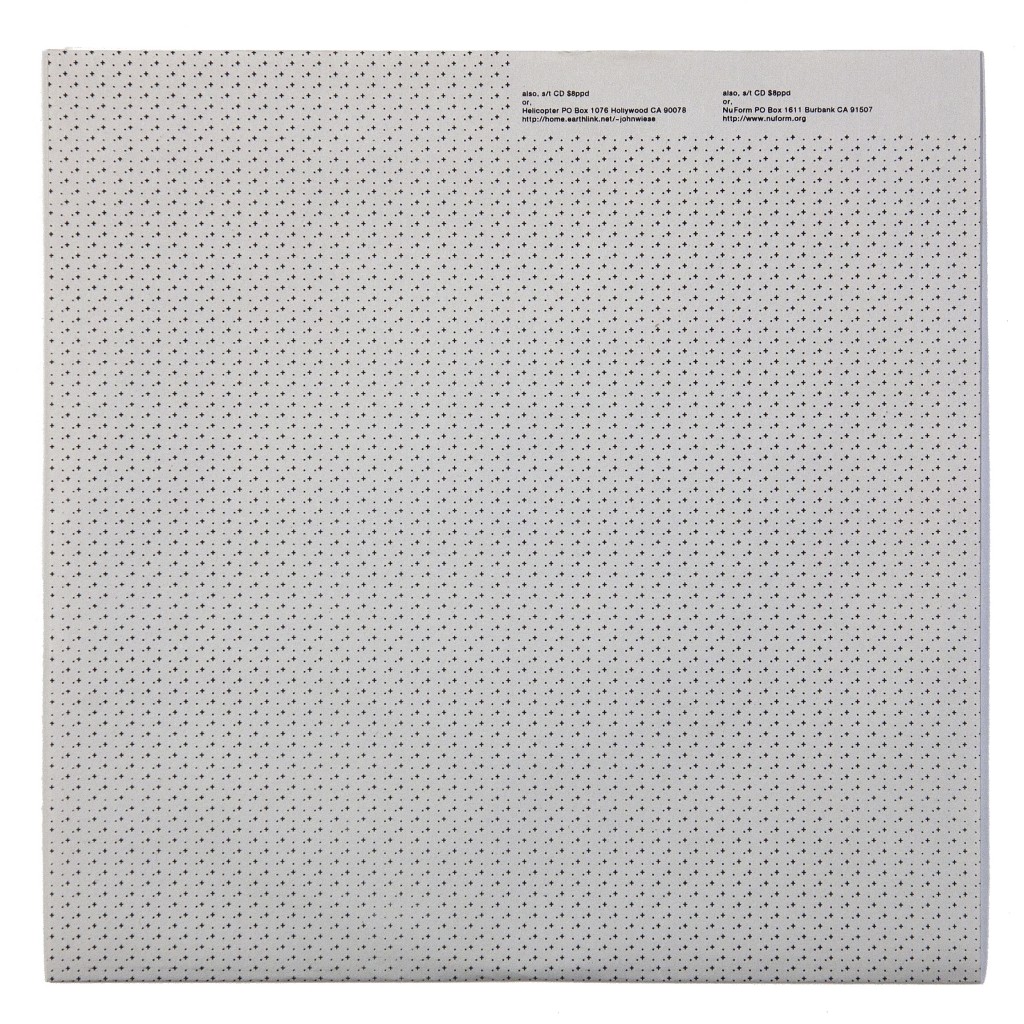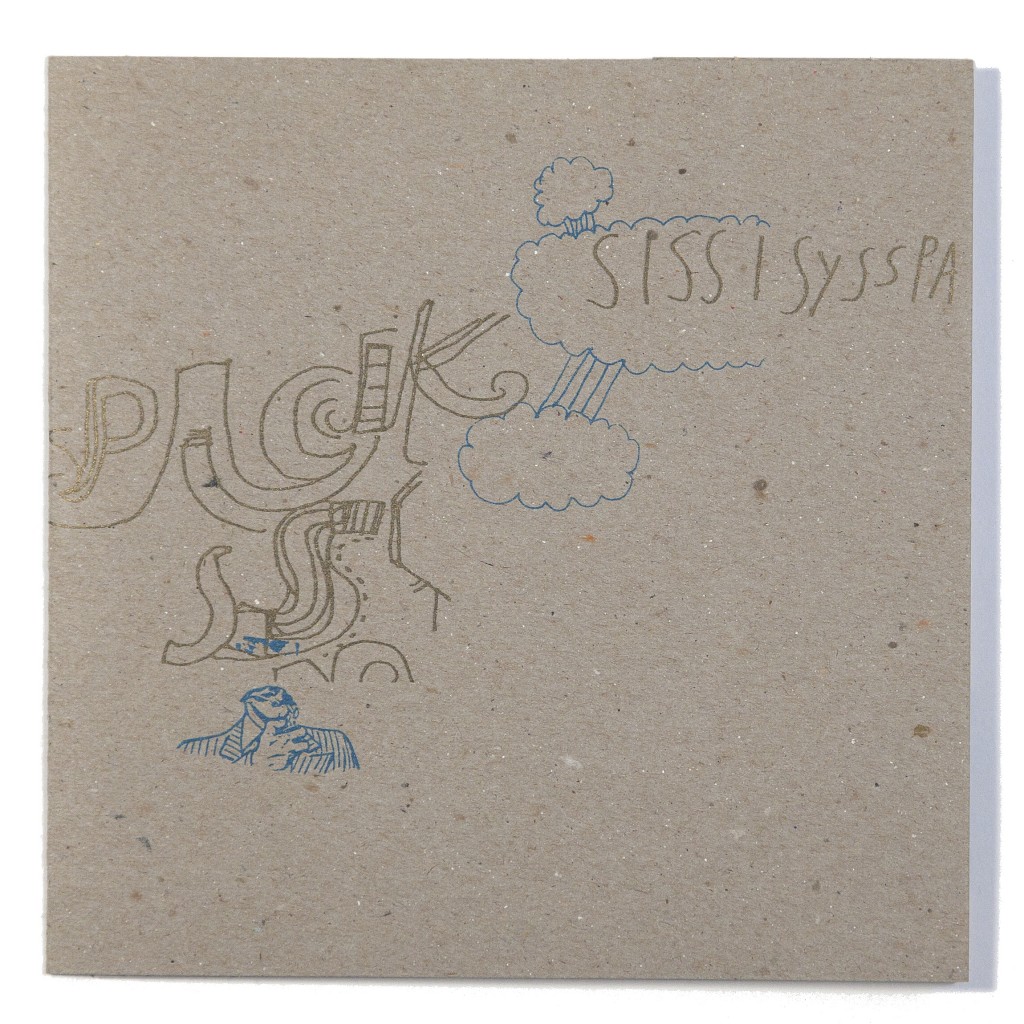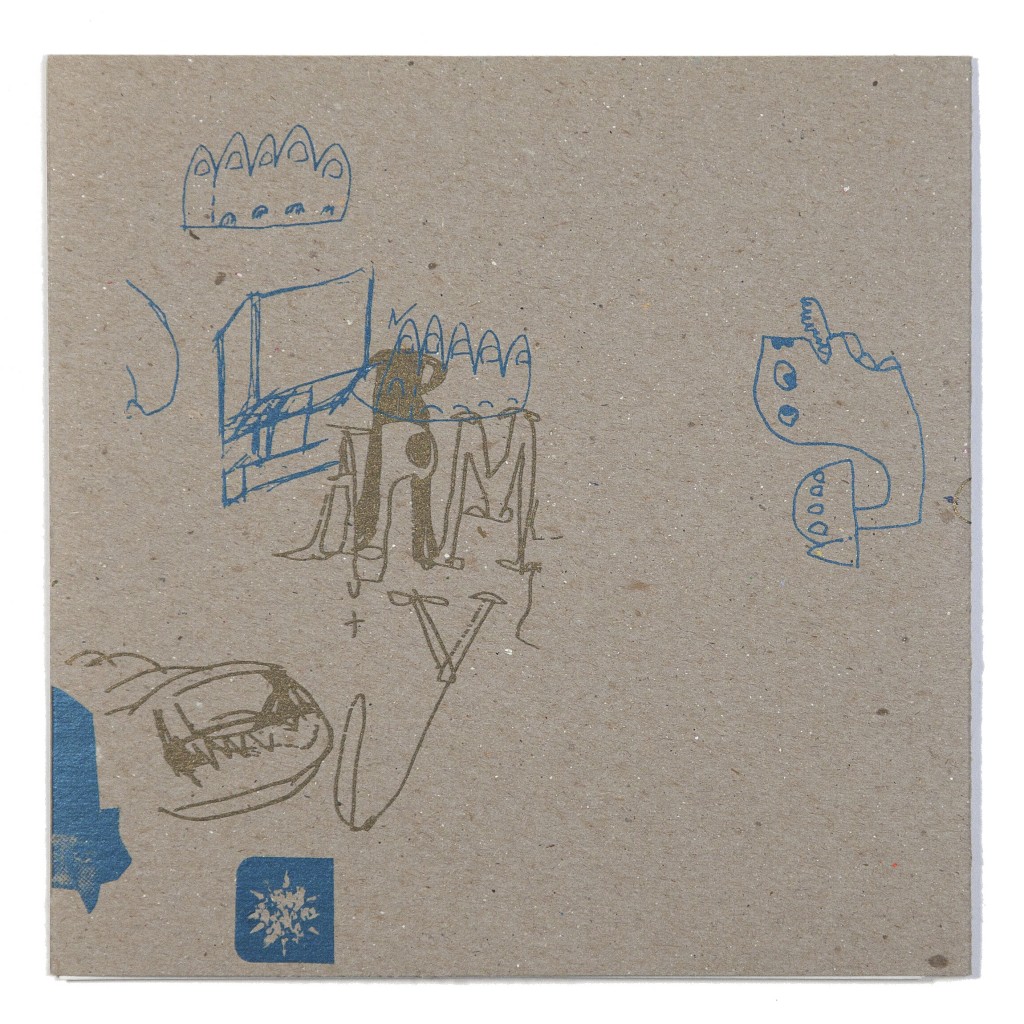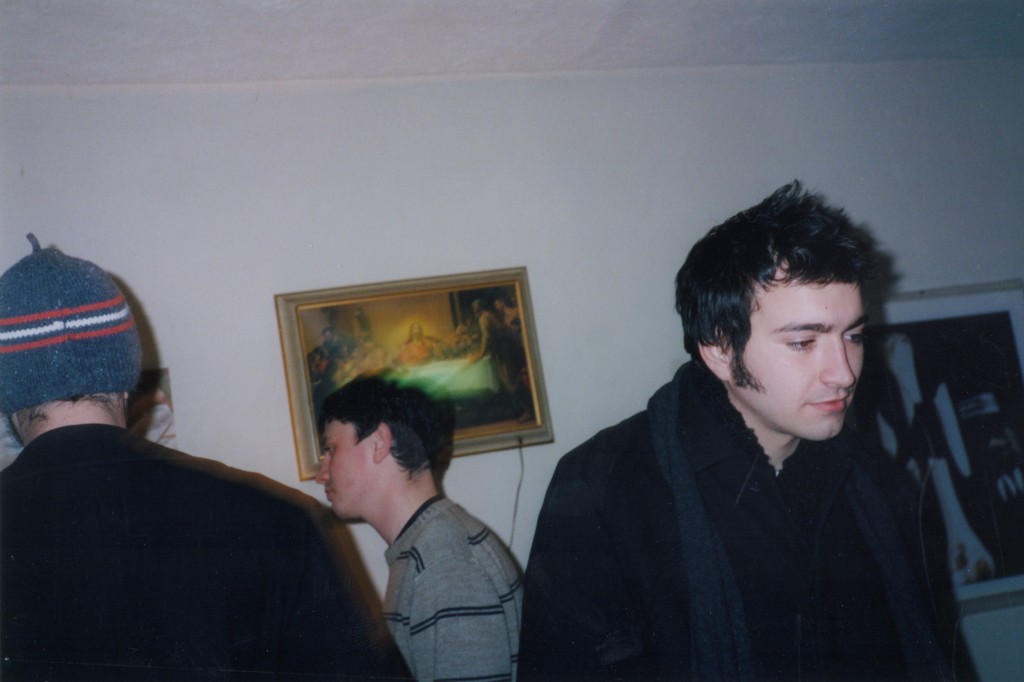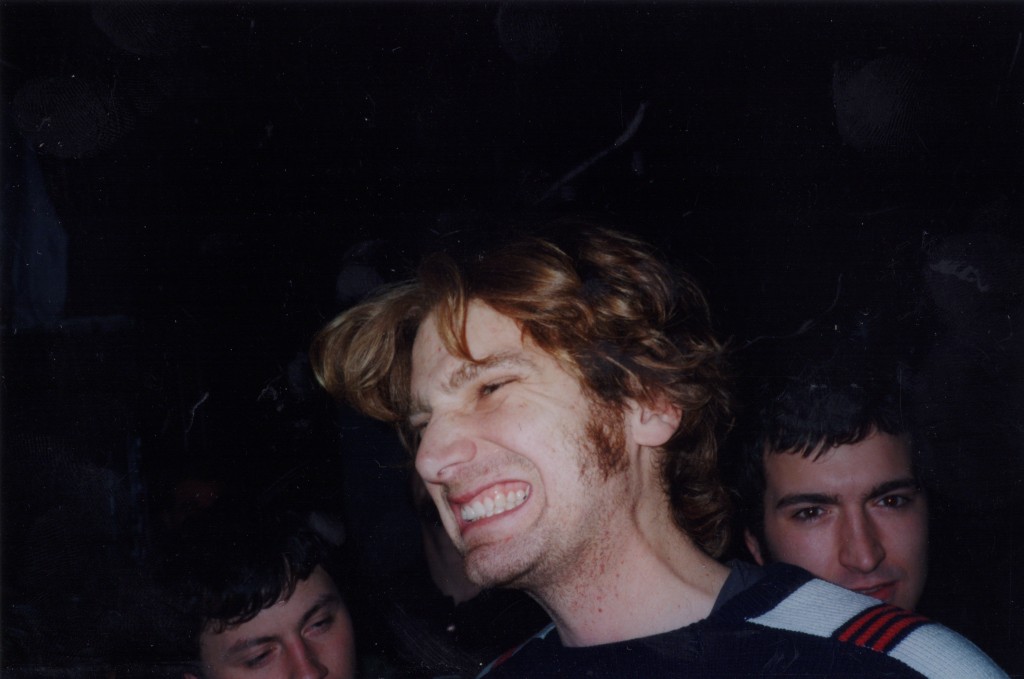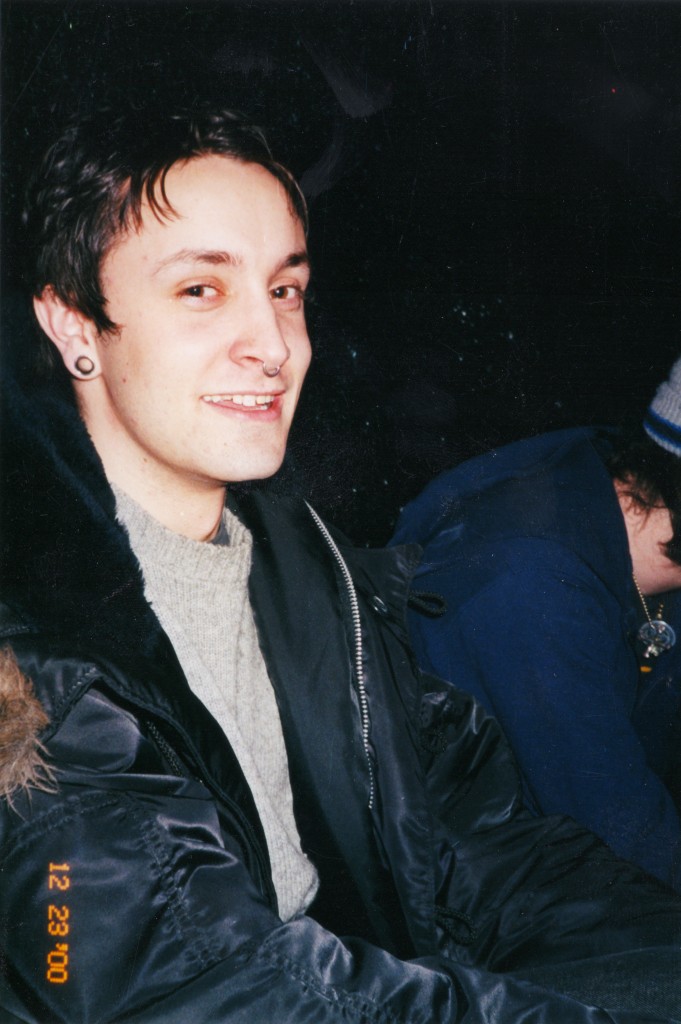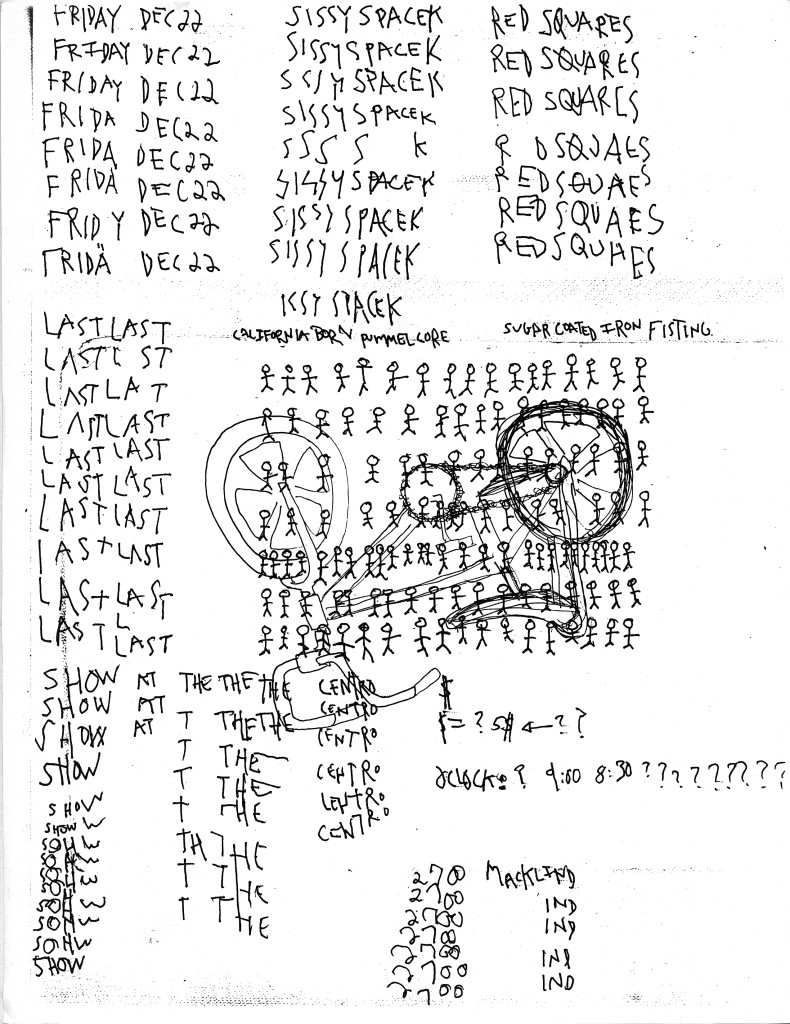Tag Archives: Danny McClain
Sissy Spacek
First Four 2xCD + DVD
Helicopter, H 68
Shipping April 15, 2015
Sissy Spacek celebrates it’s 15 year anniversary with a boxset compiling their long out-of-print first four albums (s/t, Remote Whale Control, Scissors, Devils Cone and Palm), as well as an exclusive full-length (Coast To Coast) and DVD documenting live footage, exclusive videos and a tour documentary—all housed in a printed hinged box. From its blur-grind conception, through concrète experiments, finally coming full circle and re-emerging as a live grindcore band, Sissy Spacek’s unprecedented results are well catalogued in this crucial release.
———
Sissy Spacek made its first recording in June 1999. I had just finished my first year at CalArts and Corydon was visiting from St. Louis during summer break. We recorded four songs in the second year design studio, running bass, drum machine, and vocals through a Radio Shack mixer into an amp, and the RCA output ran into my tape deck. We did many test mixes, walking out to my car each time to listen to the mix on the car stereo. I was eager to release a demo tape of these tracks, but the lyrics weren’t quite finished. Corydon recorded rough vocals and we also recorded an instrumental version to finish later. But unfortunately in the end we still didn’t have something that we could release.
Corydon returned to St. Louis. By December I was visiting for the holiday and we played our first show on Xmas day, 1999. Our friend Paul Staples performed as “The Baby Jesus” and we played our four songs plus an improvised noisecore batch with Danny McClain on drums. A recording of this was made behind the amps using a karaoke machine. It’s the worst quality recording I have ever heard, with a suffocating amount of hiss burying a thin, anti-fidelity approximation of our set. It was later released as an 8-minute side of the “Nice Gems” double 7-inch.
When I came back to California I started using the demo recording and the live set as source material, making tracks and experiments with it out of frustration that it wasn’t finished, and to mask the unfinished vocal version. The next December we played another show at the same venue, Centro Sociale. The venue was a theater on the ground floor, and it had a massive basement, basically the same plot line, and apartments above. Our first show was in the basement and the second in the theater. It was the last show they had there because the space cost $250 a month and they didn’t figure it was worth it. (That’s St. Louis for you.)
At that point, with the demo and two live shows, I had enough source material to generate what I considered an album. 78 tracks in under 20 minutes, but a reasonable intensity to duration ratio. This ended up being the first self-titled CD. I still thought of the project as a grindcore band, despite working well outside the conventions, so I designed the packaging (in my mind at least) to try to look like a hardcore album, using Corydon’s linoleum block print as the front cover and some photos our friend Kate took on the back and inside.
The next time I found myself in St. Louis in March of 2001, we didn’t play a show, but we did have a recording session at Grand Ulena’s practice space. Danny played drums and I played electronics and guitar. Corydon was there but didn’t feel like playing, so mostly Danny and I kept switching, recording duo and solo takes that were used to make the “Remote Whale Control” album. It’s basically a duo record, except for the trio take we managed with Corydon that ended up being the 3 minute centerpiece. These recordings were edited, processed and mixed into a series of tracks that had a totally different vibe than the first CD. Danny was a great drummer. He could shift between tumbling free improv and blasting in a way that’s rare. He really came from both places. His solo takes in this session were great, and showed what a talent he had.
2001 turned out to be a fairly busy year considering our pace up to that point. When I was invited to play on Bret Berg’s radio show on KXLU, I played in the studio and for one part we mic’d a speakerphone with Corydon calling in from St. Louis, ad hoc’ing vocals blindly over improvisations, and even doing vocals over one of our songs, starting on cue from a countdown established before switching over the phone. A few months later I returned to St. Louis for Xmas, as was tradition, and we played a show with Wolf Eyes at Lemp Arts Center.
I was always working on recycling the rare recordings we were able to make. I was still developing my Max/MSP patches and sometimes even extraordinarily simple adjustments could really change the way I would look at things. The session with Danny (Remote Whale Control) was still unreleased, and I spent some time experimenting with processing it in different ways, using more hard cuts and juxtaposition rather than layering. With the RWC session I finally had much clearer separated elements to work with, and started combining them with older sounds and other things that I had recorded that were non-band related.
By this time things were getting a bit confusing—the band was becoming established as a remix project of itself, with no “original” material actually being released; the listening experience being far from anything made as a band-collective. The next batch of tracks became the Scissors album. It was comprised primarily of that RWC session of Danny and me, and was full of bits and scraps from non-Spacek sources, but still made in the spirit and trajectory of what had been going on. I still wanted to release the demo, but it would be about nine years before the vocals were finished. Instead, the band’s output became almost exclusively cut-ups and collages. Scissors was released before Remote Whale Control, but chronologically, the tracks were produced after. It came out on CD and sold out immediately, then released as a gatefold LP, 100 of which came with a bonus LP of the KXLU session stuffed through into the sealed side of the cover.
Next Xmas, December 2002, we played a show at Radio Cherokee in St. Louis, this time as a trio with Danny, with the intention of playing an all-electronics set. It ended up a painful 45-minutes of no one listening to each other and no one stopping. It was at this point that I decided the project was not something I wanted to put a lot of effort into anymore, it simply didn’t work as a band, so at that point it just stopped.
Eventually Corydon moved to Los Angeles, but we didn’t record or play any shows. In 2005 Phil Blankenship invited us to play his birthday show at Il Corral (a crucial experimental-only venue off Melrose during this era). We agreed and asked Jesse to join on guitar, which seemed natural. Because of Phil’s birthday the atmosphere was great, and the show was a good one. We just played our original four tracks, which was pretty much what we used to do. We made 150 copies of the double 7-inch “Nice Gems” for the show—that was our first release in a long while. When I look at our discography, I usually see this record as a turning point for the band, a time when we became active again. It included an alternate take of a track off Scissors, the demo at half speed, and that recording of our first show at Centro. After the Il Corral show, the project really seemed like something that we should revive, despite a formidable build up of baggage. It took us almost a year to play another show, in Oakland this time, and we still had no recordings as a band. As was the tradition, I took recordings of both shows and our rehearsals and turned it into the Devils Cone And Palm album. I think that one is effective in adding fidelity as a collaging element, going from walkman, to hard disk recorder, and open-air to direct sounds within short blasts. At the end you can hear the Il Corral set as recorded on walkman by our screaming pal Katie.
The first CD in the boxset has our first four albums on one disc (they fit), and includes a track off the Psychic Facts LP, which was the KXLU session as hidden-LP in Scissors. That takes you from 1999 to 2006. We only played 8 shows over that period. People sometimes think of us a functioning band, but up until that point we never really were (up to that point at least). I never really wanted to be in a band and looking back I think Sissy Spacek’s take on being a “band” was truly bizarre, and rarely worked. We didn’t do our first tour until 2008, which was up the west coast. Our goal was to double the amount of shows we’d ever played. The second tour we did was the full-US tour from 2010 where we tried to double the amount of shows we’d ever played again. That tour was a real nightmare.
As you can see from the DVD, we eventually came full circle when Charlie Mumma joined the band playing drums. We wrote new material that came back to our roots as blur/grindcore and started to focus on this as our consistent live mode. Our first 7-inch of grindcore as a band, thirteen years after recording our first demo, was Contretemps. It was released on PPM by Dean Spunt—a kid in a Locust shirt that we met by chance in the CalArts parking lot and invited to join us in the car to listen to rough mixes while recording the original demo. Despite moving back to “band” territory, we’ve managed to keep a significant question-mark present in the recordings. In a sense it’s great that the music industry tanked—if people “don’t buy records anymore”, then all the more reason to make them experimental without fear. It makes sense to me to keep the live experience more dependable, and make the recordings experimental—both rewarding in their own way. The people that are interested will still be the ones who are interested.
A few quick notes about the DVD. It starts with the Il Corral show in 2005 and takes you up to 2013, in a sense passing the baton chronologically from the First Four CD—as I previously said, the Il Corral show was a re-ignition and made us want to play more again as a band. The No Fun Fest video was made using only clips found online, which informs the strange edit. At the ATA show in San Francisco, Paul Costuros joined us on clarinet due to Jesse’s illness post-Vancouver show (read the full story in the description for the RIP CD on Gilgongo). The show at Paegent Soloveev was on our full US tour in which we played primarily electronics sets. The Experimental Half Hour segment was filmed in Portland for one of their episodes. They started as a public access show, using a local studio and facilities, now relocated to Los Angeles. All the episodes can be viewed online. The DVD that came with the Window Hammer 7-inch is also included as a bonus, featuring the 2011 tour documentary filmed on the west coast at shows and a recording session with Smegma. Our friend Matt Purse edited it together from a pile of raw material. The two extra live sets were from our next west coast tour, filmed in Olympia and Portland. The Portland show at Valentines ends with Aaron Montaigne delivering the lyrics to We Bite (Misfits) before our only live rendition.
John Wiese, December 2014
Sissy Spacek – Gore Jet CD (Sweat Lung, Australia)
Sissy Spacek – Remote Whale Control CD (Misanthropic Agenda)
